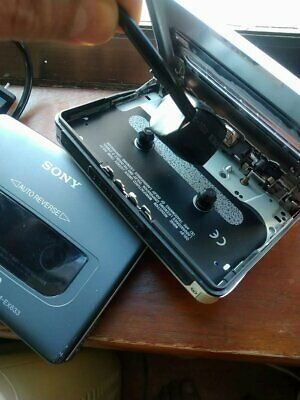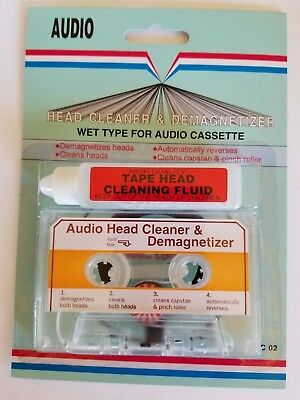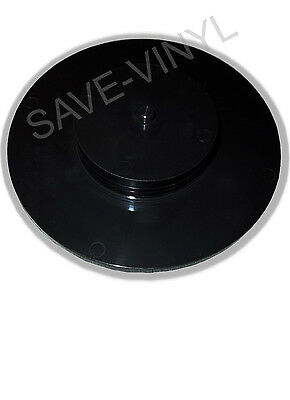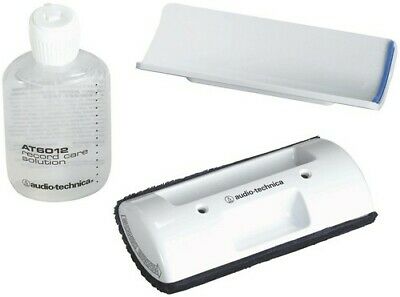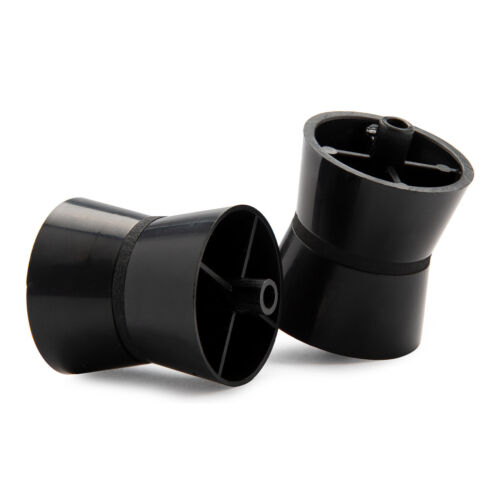-40%
easy use Demagnetizer degausser for CD CDM4 maglev head philips Cd player
$ 15.83
- Description
- Size Guide
Description
This is a listing for1 X 110V Demagnetizer degausser
for CD use
***** Philips CD player w/CDM4 easy has "Error" when CD input.
after demagnetize the CD , error will be 100% disappear
for Cassette player head , 8-Track , Reel-To-Reel CD Vinyl sony WM 501 503 EX DD2 ...etc
*** user manual will be attached , we also have 220V version , please refer other listing .
it is a fully working cassette tape head
demagnetizer. you can feel the vibaration when use on cassette player head , It removes the residual
magnetisim that builds up in tape heads,
and if used regularly ( after 30hrs
playtime) will help keep your music
cassettes sounding as good as new.
===============
What is the purpose of degaussing?
Many people are puzzled when they first
see Furutech's degaussers. Why do CDs
need to be degaussed? Why are CDs
magnetic? CD reading does not rely on
magnetism. Why does magnetism affect
the sound? And why does degaussing
make the CD sound better? Some people
even sneered at this product, thinking it
was just another street ointment showing
off acoustic metaphysics. Is that true?
I am also very curious, and I was
skeptical about it because I couldn't
imagine the truthfulness of his theory.
However, I couldn't help being curious,
so I make this degausser .However, I have
to say that there is a real and huge
difference, and it is definitely audible,
even if the equipment level is not high,
the difference is still audible. When I use
it most often, I ritually put the CD on it
before preparing the rip CD, demagnetize
the front and back, and then rip again.
===========
Looking back at the previous question,
why degauss? Because metal is magnetic.
There is metal in the CD? Just inside the
reading layer, the main material of the
reading layer is aluminum, the
composition is about 99%, and 1% is
other metals, such as iron, nickel, cobalt,
etc. Although aluminum is a weakly
magnetic metal, its permeability is low,
but the 1% iron, nickel, and cobalt are all
ferromagnetic metals. Therefore,
although the CD reading layer is only a
thin layer, it will still be affected.
Furthermore, the printed layer on the CD
surface always contains metal
components in those pigments, such as
iron oxide in red, yellow and brown
pigments, cobalt in blue and green
pigments, and silver pigments. nickel.
These seemingly very small amounts of
ferromagnetic metals can induce
magnetism. When a CD is read on a
turntable, it will be affected by the motor
that drives the CD to rotate. This makes
the sound of the CD play more frizzy and
tight, and the three-dimensional effect
and sound lines appear less clear.
Therefore, it is like removing
fingerprints or oil stains on the original
lens, so that you can see more clearly. If
the magnetism on the CD can be removed,
the CD can be read to restore the true
appearance of the music.
============
Vinyl is also magnetic? The trouble with
dyes and pigments
Oh, here comes the problem again. The
CD has a metal reading layer and metal
printing pigments on it, so it is magnetic.
Why are vinyl records sensitive to
magnetism? Vinyl is plastic, but polyvinyl
chloride (PVC) is used. The plastic itself
is not magnetic. There is no metal
reading layer in the record, and there is
no printing coating on it, but a sticker
label. Hey, vinyl records will still be
magnetic.
Although vinyl is a plastic material, it
should not be magnetically sensitive in
theory, but according to the
measurement with precision instruments
by Tokyo Nanotechnology Center in
Japan, it is found that LP has 620~630nT
(nanotesla) magnetism, which comes
from Metal in vinyl dye. Where do you
think the color of vinyl records comes
from? PVC is not originally black. The
color of pure PVC should be white. The
color is caused by the incorporation of
pigments. The common record color is
black, and a few records are in other
colors, such as red, blue, and even
colored records. These pigments used for
dyeing contain metals such as iron, which
make vinyl records magnetic. Even
optically read CDs can affect the sound,
not to mention vinyl records. The
principle of vinyl record reading is to
rely on a cartridge with a magnet coil
wound as the core to read the scores in
the grooves of the record, and drive the
magnet in the cartridge to swing, and
produce electromagnetic effects with the
surrounding coils, and then produce
sound. The electromagnetic signal is
finally amplified by an amplifier to push
the speaker to produce sound. This
process can be completely an
electromagnetic story. Once the vinyl is
magnetized, this weak magnetic force
will interfere with the coil of the
cartridge. According to the original data,
after DeMagα demagnetization, the
magnetic field strength can be reduced to
572~582nT.
===============
The effect is obvious, one to know
Having said so much, effectiveness is
important. How's the effect? Just like I
used the CD degausser before, although
the principle is correct, people feel
dubious; however, once I use it, I feel
that I don’t have to doubt it. The more I
use it, the more I am convinced of its
effect. After cassette , CD and the vinyl
record is degaussed, the sound becomes
clearer and more three-dimensional, the
lines are more condensed and clearer,
and the extension becomes better.
Compared with the undegaussed film, it
looks a little hazy and foggy before
degaussing. a little. I like this, do you
wear glasses? If you are like me, you have
to clean your lenses every day. If you don’
t pay attention, you probably won’t feel
that your glasses are dirty. However, if
you clean in the morning and take off
your glasses at noon, you will see some
dust sticking to the lenses. If you don’t
check it, you don’t realize it is different,
and you feel that you can see clearly, but
if you clean your lenses and put them on,
you will find that even if they are only a
few hours apart, this tiny bit of dust still
affects your vision. Don't know it, it's
clear. Degaussers are just like that.

